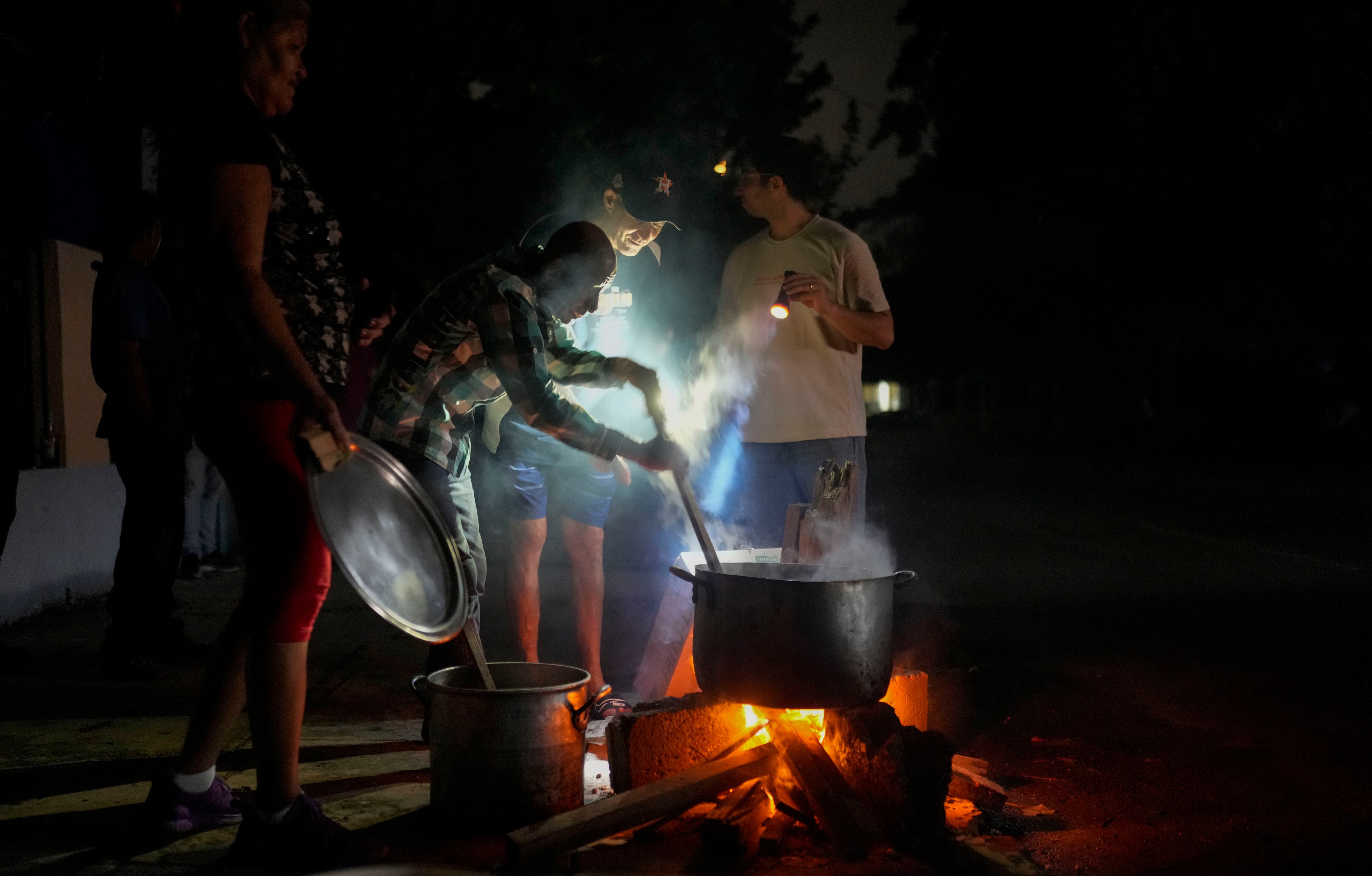
When Susana Cuesta woke up on Sunday, in her house in the center of the city of Pinar del Río the light had not yet arrived. Then he learned that it was not just his neighborhood, but almost all of Cuba, which has been immersed in a national blackout since midday Friday that the authorities have not been able to restore. “I am very afraid, uncertain, helpless… I don’t know where we are going to end up,” says Cuesta by message. “My refrigerator finished defrosting completely. My girls’ milk spoiled and now I’m cooking chicken thighs and thighs and some pork steaks so they last a little longer and don’t rot.”
There are many who, on the island, There are already more than 50 hours without a service as basic as electricity. Others have had light for two or three hours and then have been completely dark again. The panorama becomes bleak: there are people cooking with firewood on the sidewalks, long lines to reach the scarce liquefied gas cylinders and a general lack of communication due to the impossibility of recharging their cell phone batteries.
Hospitals begin to collapse. A source who preferred to remain anonymous assures that in the pediatric center in the province of Pinar del Río there are several children with scabies – a contagious skin disease – who cannot bathe due to lack of water and fuel to pump it. Most of the hospital wards are kept in darkness, except for those in intermediate, intensive care and onco-hematology. Some parents have decided to admit children who need air conditioning or respirators of their own free will, with improvised beds in the hallways.
Although Cubans have been dealing with uncomfortable and prolonged blackouts of several hours for months, last Friday the country declared an “energy emergency” after the collapse of the national electrical system and the failure of the Antonio Guiteras thermal power plant, the largest on the island. The authorities claim to be working to restore the supply, but three days later Cuba remains paralyzed. The state company Unión Eléctrica (UNE) assured on Saturday that 11% of the total had been restored, especially in the western part of the country, but the efforts have not been sufficient. The system went down again hours later and Cubans remain uncertain about when they will finally be able to have access to electricity.
The causes of the national emergency are not new: experts have already foreseen a similar situation for a long time. The Government has explained that – in addition to the blockade that the United States maintains against Cuba and with which it justifies most of the deterioration and calamities suffered by the island – the state of the infrastructure is critical, with an evident lack of fuel that cannot be afford with the scarce foreign currency available and a recent increase in demand. Even so, the Prime Minister, Manuel Marrero, has stated that the country is not “in a bottomless abyss”, despite having had to suspend educational, cultural and recreational activities, as well as activity in workplaces that they consider not essential. That is, in the vast majority.
Generators, too expensive
Life has become a matter of survival for many. In recent times, the informal sale of electric generators or solar panels has increased to overcome daily life. There are, however, few who can get one of these, which have prices of up to 2,000 dollars (just over 1,800 euros). “People who have plants are because they have family abroad or a good economic position here to afford one,” says Cuesta. “The vast majority of us don’t have any, but some neighbors show solidarity and help us charge cell phones and (rechargeable) fans for the children. The reality is that not everyone can, because they are expensive.”
The unrest caused by the blackout has caused protests, banging pots and other demonstrations of discontent in some parts of the country. In areas of the capital such as El Vedado, San Miguel del Padrón, Lawton or Centro Habana, as well as in provinces such as Santiago de Cuba or Villa Clara, some have taken to the streets to protest a situation that has gotten completely out of hand. . The massive blackout that began on Friday is already one of the longest in the history of an island that has experienced many blackouts, especially since the fall of the Soviet Union and the consequent loss of its main trading partner. As if that were not enough, meteorologists have issued a hurricane alert Oscarwhich threatens to cross the northern Cuban coast. Something that would aggravate a situation already on the brink.

